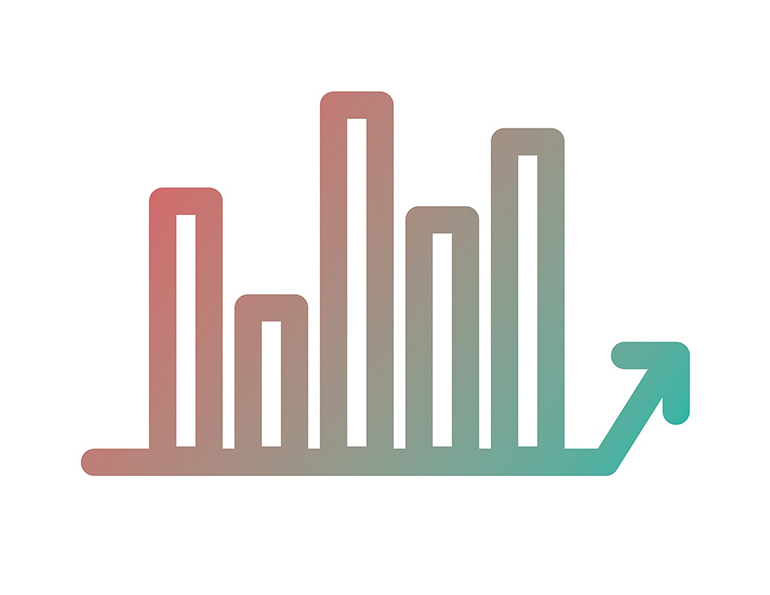SAM Magazine—Stowe, Vt., April 14, 2022—Winter lodging rates and revenue are tracking toward new record levels at western mountain destinations, while summer room rates appear to be softening, according to the most recent Monthly Market Briefing from DestiMetrics, the Business Intelligence division of Inntopia.  The report again shares multi-year comparisons beginning with the pre-pandemic 2018-19 season. Looking ahead, summer travel may be impacted by a number of factors including the war in Ukraine, tightening oil supplies, ongoing inflation, and another surge of new Covid variants.
The report again shares multi-year comparisons beginning with the pre-pandemic 2018-19 season. Looking ahead, summer travel may be impacted by a number of factors including the war in Ukraine, tightening oil supplies, ongoing inflation, and another surge of new Covid variants.
The data are aggregated through March 31, 2022, from approximately 28,000 lodging units in 17 western destinations in Colorado, Utah, California, Nevada, Wyoming, Montana, and Idaho, representing 55 percent of all rental capacity in those regions.
While rate and revenue for winter 2021-22 are almost certain to set new records, occupancy lags close behind, with record results dependent on how April performs. The month of March continued along February’s performance growth track.
March 2022 compared to 2021: Occupancy in March was up 10.5 percent and the average daily rate (ADR) was up 41 percent to deliver a staggering 56 percent increase in revenue for the month.
March 2022 compared to 2020: Occupancy was up 118.6 percent over March 2020. Daily rates were up 46 percent for a whopping 219.2 percent increase in revenue. While impressive performance, it is important to note that the entire industry shut down swiftly in March 2020 due to the pandemic.
March 2022 compared to 2019: Against the pre-pandemic March 2019, occupancy this year was up 2 percent, with ADR up an impressive 39.8 percent for an overall gain in revenue of 42.6 percent. While room rates have increased significantly in this time, demand for mountain lodging remains strong.
The full winter season, including actual numbers for November through March, and on-the-books for April, sees continued growth.
Winter 2021-22 compared to 2020-21 at this time: Occupancy is up 25.5 percent with gains in all six months. ADR is up 37.2 percent and destinations are experiencing a 72.1 percent increase in revenues.
Winter 2021-22 compared to 2019-20 at this time: Occupancy is up 29 percent (with March 2020 only seeing two weeks of operations), with gains for all winter months with the exception of January seeing a decline of 3.3 percent. ADR is up 25.8 percent and is yielding a hefty 62.3 percent increase for that abbreviated season.
Winter 2021-22 compared to 2018-19 at this time: Despite winter three years ago seeing near-record growth, occupancy is still up 2.6 percent, with gains in four of the six months, excluding November and January (down 5.1 and 4.9 percent, respectively) when resorts faced myriad staffing and occupancy challenges due to surging Covid cases. ADR is up 33.4 percent over that benchmark-setting season, leading to properties posting a 39.6 percent gain in revenue and increases in all six months.
“Lodging performance so far this winter has done as expected, beating both last year and, of course, the 2019-2020 season that ended so abruptly,” said Tom Foley, senior VP of business intelligence for Inntopia. “But we’re pleased and a little surprised to see that, despite the Omicron surge in December and January, which stifled bookings considerably, the mountain lodging industry will be setting all-time rate and revenue records this season—beating out the 2019-2019 season by a long shot. And while that was pretty evident as early as 60 days ago, we’re watching closely to see if occupancy will set a record as well—although that will be tougher given the relatively mediocre snow conditions this year compared to 2018-2019.”
Looking forward to summer
While summer bookings for the months of May through October begin to ramp up as the winter season ends on a seemingly high note, strong growth patterns appear to be continuing. ADR, however, seems to be reaching a plateau following two years of soaring growth.
Compared to 2021: Aggregated occupancy is up 21.8 percent with gains currently indicated in all six months. Aggregated summer daily rates, in contrast, are up 3.8 percent with negligible declines in May and June. Still, those declines are the first on record since February 2021. Despite the daily rate ebbs, on-the-books revenue for summer is still up 26.4 percent year-over-year.
Compared to 2020: Summer occupancy is up 38.1 percent over the first pandemic summer, with gains in every month. Daily rates grew 30.9 percent and aggregated lodging revenues are up 80.8 percent overall, showing the rise from pandemic ground-zero occupancy levels.
Compared to 2019: As the trend continues, occupancy over the pre-pandemic summer is up slightly at 2.3 percent with gains in every month besides May, which is down 15.4 percent. Summer daily rates boosted by 39 percent, leading to on-the-books summer revenue up 42.2 percent compared to pre-pandemic levels.
Foley reported the 3.8 percent year-over-year gain for summer is the lowest since vaccines were rolled out in early 2021, suggesting those dramatic gains may be losing momentum. He noted that despite potential concerns with inflation continuing to influence the economy, it is important to keep an eye on the near future.
“With consumers very difficult to read right now, and seemingly bottomless pockets, don’t rule out an ongoing demand for occupancy driving rates up in the weeks ahead,” he said
Looking further ahead: “The shortfall of employees in the leisure and hospitality sector is creating significant challenges for managers to deliver the high level of service that visitors expect when paying much higher rates and fees than previous years. If that situation isn’t corrected or alleviated in the coming months, daily rates could be forced down as inflation pressures rise,” he concluded.




